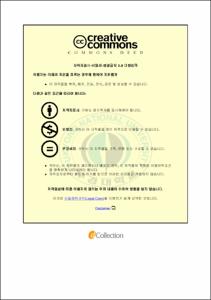코발트기 자융성 합금 코팅의 Tribology 특성에 관한 연구
- Alternative Title
- Tribology Characteristics of Co-based Self-flux Alloy Coatings
- Abstract
- Since the surface of materials is directly exposed to the surrounding environment, wear and corrosion damage often occurs. In order to solve these problems, thermal spray technique is spotlighted in many industries. Especially, thermally sprayed Co-based self-flux alloy coating which has excellent wear and corrosion resistance is widely used in industries that require superior surface characteristics. As self-flux alloy is inherently designed for heat-treatment after forming the coating layer, defects of coating layer such as porosity, unmelted particle and splat boundary can significantly be reduced by heat-treatment.
This paper describes process optimization for thermally sprayed Co-based self-flux alloy coating by Taguchi method and effect of heat treatment on tribology characteristics of Co-based self-flux alloy coating. Coating specimens were fabricated on steel substrates according to L9(34) orthogonal array using flame spray process. Microvickers hardness test and ball-on-disk type sliding wear test were performed. In order to derive the optimum process condition, the results were analyzed by analysis of variance(ANOVA) considering a multi response signal to noise ratio(MRSN). Heat-treatments were carried out at 800, 900, 1000 and 1100℃ for 30min in a vacuum chamber. For analysis of effect of heat treatment on tribology characteristics, wear test and hardness test were performed for heat-treated coating specimens. Microstructures of heat treated coating layer and wear track were examined using SEM and EDS. From the results of ANOVA, the optimal combination of the flame spray parameters on Co-based self-flux alloy coating could be predicted. The calculated hardness and wear rate of the coatings by ANOVA were found to be close to that of confirmation experimental result. In following study, effect of heat-treatment temperature on tribology characteristics of Co-based self-flux alloy coating was analyzed. The principal wear behavior of the as-sprayed coatings was splat detachment. However, dominant wear behavior of heat-treated coatings transferred to abrasive wear with increasing heat-treatment temperature.
- Issued Date
- 2014
- Awarded Date
- 2014. 2
- Type
- Dissertation
- Publisher
- 부경대학교
- Alternative Author(s)
- Lee, Jae Hong
- Affiliation
- 대학원
- Department
- 대학원 기계설계공학과
- Advisor
- 김영식
- Table Of Contents
- Abstract
제 1 장 서 론
1.1 연구의 배경
1.2 연구의 목적
제 2 장 실험 방법 및 절차
2.1 실험계획법
2.2 시험편 제작
2.3 후열처리
2.4 특성치 측정
2.4.1 경도 측정
2.4.2 마모율 측정
제 3 장 결과 및 고찰
3.1 실험계획법에 따른 최적공정 도출
3.1.1 경도를 특성치로 고려한 경우의 공정최적화
3.1.2 마모율을 특성치로 고려한 경우의 공정최적화
3.1.1 다중특성치를 특성치로한 최적공정
3.2 후열처리 온도가 코팅층에 미치는 영향
3.2.1 열처리 온도가 코팅층의 미세구조직에 미치는 영향
3.1.2 열처리 온도가 코팅층의 경도에 미치는 영향
3.1.2 열처리 온도가 코팅층의 마모율에 미치는 영향
제 4 장 결 론
참고문헌
- Degree
- Master
- Files in This Item:
-
-
Download
 코발트기 자융성 합금 코팅의 Tribology 특성에 관한 연구.pdf
기타 데이터 / 1.94 MB / Adobe PDF
코발트기 자융성 합금 코팅의 Tribology 특성에 관한 연구.pdf
기타 데이터 / 1.94 MB / Adobe PDF
-
Items in Repository are protected by copyright, with all rights reserved, unless otherwise indicated.